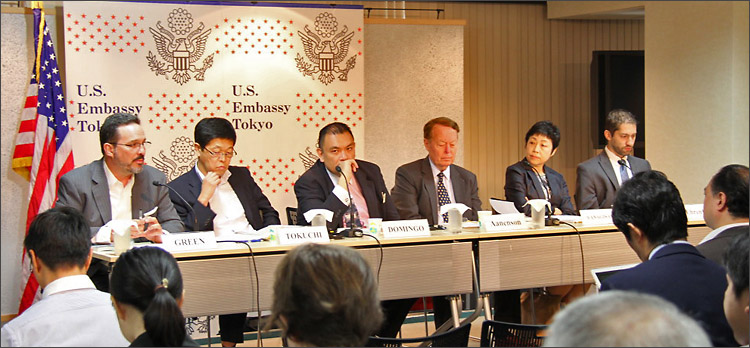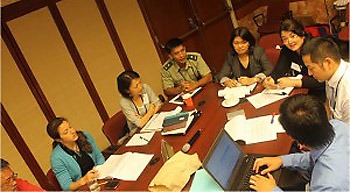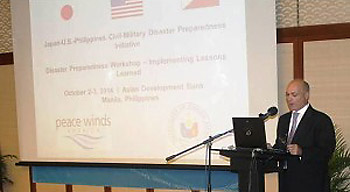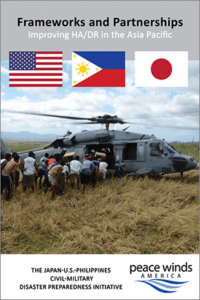U.S. – Japan – Philippines Disaster Preparedness Initiative
PWA implemented the 2013-2015 Japan-U.S.-Philippines Trilateral Disaster Preparedness Initiative with Japan, the U.S., and the Philippines to enhance preparedness and response within each country, among the three partners, and for other countries in the Asia Pacific.

The Trilateral Initiative included workshops, trainings, policy forums, and interviews with over 450 participants. Supported by the Sasakawa Peace Foundation and the Japan Foundation Center for Global Partnership, the Initiative brought together military and civilian disaster managers from the three countries to explore best practices in humanitarian assistance and disaster response (HA/DR) and to generate recommendations for future bilateral and trilateral cooperation.
In the midst of the Initiative, Typhoon Haiyan struck the Philippines. The response of the three nations to this devastating event lies at the core of PWA research and analysis in the Initiative.


 Frameworks and Partnerships – Improving HA/DR in the Asia Pacific
Frameworks and Partnerships – Improving HA/DR in the Asia Pacific
Frameworks and Partnerships – Improving HA/DR in the Asia Pacific was published by Peace Winds in 2015. The report is the culmination of the Japan-U.S.-Philippines Trilateral Disaster Preparedness Initiative.
This report assesses the disaster preparedness and response relationship of Japan and the U.S. in the context of operations with a regional partner and ally: the Philippines. The book analyzes how each nation’s disaster response can be improved in terms of “whole of society” collaboration and using the unique relationships among Japan, the U.S., and the Philippines.
The November 2013 Typhoon Haiyan provides the case study upon which the report’s analysis rests. The case study produces a wide diversity of findings, yielding recommendations for the future.
The report, which features a Japanese language executive summary and conclusion, also features discussions of the 2014 Typhoon Hagupit and a detailed assessment of the Japan/U.S. response to the Philippines. From this example it provides analysis of how HA/DR can be strengthened and refined within the Japan-U.S. strategic alliance, with regional neighbors, and with multilateral partners such as ASEAN.
You can download this publication and related materials on our Publications Page.